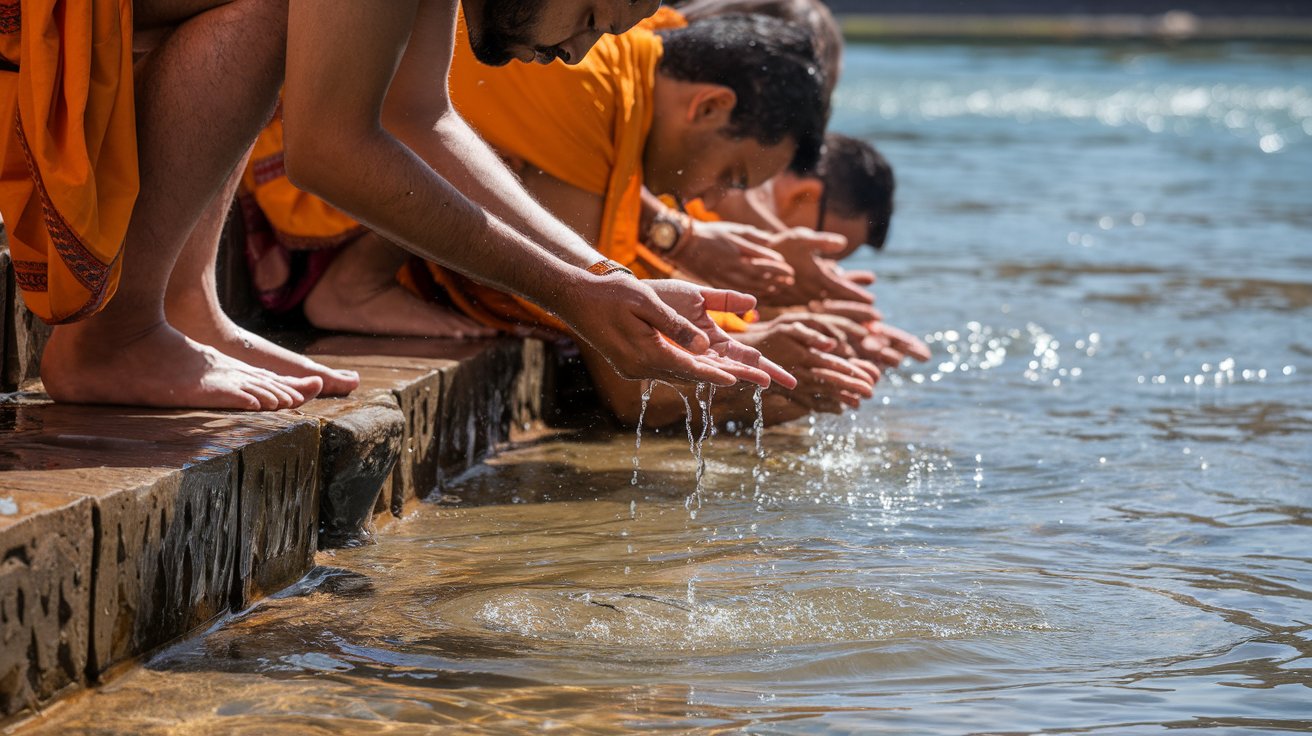
The sacred occasion of Mauni Amavasya, marking one of the most spiritually charged days in the Hindu calendar, will be observed on Wednesday, January 29, 2025. This auspicious day holds special significance during Mahakumbh 2025, featuring the third royal bath (Shahi Snan) of the grand spiritual gathering.
Mauni Amavasya 2025 Date and Time
| Events | Date and Time |
|---|---|
| Mauni Amavasya | Wednesday, January 29, 2025 |
| Amavasya Tithi Begins | 19:35 on Jan 28, 2025 |
| Amavasya Tithi Ends | 18:05 on Jan 29, 2025 |
| Third Shahi Snan | Wednesday, January 29, 2025 |
The Divine Origins and Historical Significance
The roots of Mauni Amavasya run deep in Hindu mythology and spiritual tradition. According to ancient texts, this sacred day marks the time when Sage Manu, considered the progenitor of mankind, performed intense meditation in complete silence. Through his unwavering dedication and the power of silence, he achieved divine wisdom that would later guide humanity.
Hindu scriptures also reveal that Lord Brahma began the creation of the universe on Mauni Amavasya, making it a day of new beginnings and spiritual awakening. This divine connection is further emphasized by the belief that on this day, the sacred rivers transform into Amrit (divine nectar), bestowing spiritual purification and immortality upon those who bathe in their holy waters.
Power of Silence: Why We Observe Mauni Amavasya
The practice of maintaining silence, or “Maun,” is the cornerstone of Mauni Amavasya celebrations. This sacred silence is not merely the absence of speech but a profound spiritual discipline that allows practitioners to dive deep into their consciousness. Through silence, devotees conserve their spiritual energy, enhance mental clarity, and strengthen their connection with the divine.
Ancient sages discovered that when the body observes complete silence, the mind naturally turns inward, facilitating deeper meditation and self-reflection. This internal journey becomes particularly powerful on Mauni Amavasya, as the day’s spiritual energy amplifies the effects of all religious practices and meditation.
Anchestral Connection:
This day is considered ideal for performing rituals for ancestors, as the veil between earthly and spiritual realms is believed to be thinnest.
Mantra: Chant this mantra 108 times on the day of Mauni Amavasya. By doing this, Pitra Dosh gets eliminated from the person’s house.
ॐ आद्य-भूताय विद्महे सर्व-सेव्याय धीमहि, शिव-शक्ति-स्वरूपेण पितृ-देव प्रचोदयात्
The Grand Celebration: Third Shahi Snan at Mahakumbh 2025
The convergence of Mauni Amavasya with the third Shahi Snan of Mahakumbh 2025 creates an extraordinary spiritual atmosphere at Prayagraj. The day begins before dawn, as the sacred procession of Akhadas makes its way to the Sangam. Led by the revered Naga Sadhus, different Akhadas follow in a predetermined sequence, each performing unique rituals at the confluence of the holy rivers.
The royal bath ceremony is a spectacular display of ancient traditions and spiritual fervor. Beginning in the pre-dawn hours around 4 AM, the ceremony follows strict protocols and timings. After the Shahi Snan concludes, millions of devotees take their holy dip in the sacred waters, believing this immersion will cleanse them of sins and bring spiritual liberation.
Astrological Significance and Divine Timing
The 2025 Mauni Amavasya carries special astrological significance due to unique planetary alignments. The new moon in the Magha month, combined with beneficial planetary positions, creates an extremely favorable environment for spiritual practices. During this time, the cosmic energies are believed to be particularly conducive to meditation, prayer, and ancestral offerings.
Extended Rituals and Practices
Extended Rituals and Practices
- Pre-Bath Rituals
- Waking up before sunrise
- Meditation and pranayama
- Recitation of sacred mantras
- Preparing offerings for the divine
2. Sacred Bath Procedure
- Enter water facing east
- Offer water to the Sun
- Recite Gayatri Mantra
- Perform Surya Arghya
- Take three complete dips
3. Post-Bath Ceremonies
- Ancestral offerings (Tarpan)
- Charity and donations
- Temple worship
- Meditation in silence
Sacred Rituals and Spiritual Practices
The day begins before sunrise, as devotees wake up early to prepare for the sacred rituals. The morning typically starts with meditation and pranayama, followed by the recitation of sacred mantras. The ritual bath itself is a carefully choreographed ceremony – devotees enter the water facing east, offer water to the Sun, and recite the Gayatri Mantra while taking three complete dips.
After the sacred bath, practitioners engage in ancestral offerings (Tarpan), which hold special significance on this day. It’s believed that on Mauni Amavasya, the veil between the earthly and spiritual realms becomes thin, making it an ideal time to pay homage to ancestors and seek their blessings.
Cultural Celebration and Community Gathering
The Mahakumbh celebrations during Mauni Amavasya extend beyond religious rituals. The banks of the Sangam come alive with spiritual discourses, traditional music performances, and sacred art exhibitions. These cultural programs not only enhance the spiritual atmosphere but also help preserve and promote India’s rich cultural heritage.
Conclusion
Mauni Amavasya 2025 presents a unique opportunity for spiritual growth and divine connection. Whether participating in the grand celebrations at the Mahakumbh or observing the day through silent meditation at home, this sacred occasion offers everyone a chance to experience profound spiritual transformation. Through the power of silence, the sanctity of ancient rituals, and the collective energy of millions of devotees, Mauni Amavasya continues to be one of the most significant days in the Hindu spiritual calendar.
For Read About MahaKumbh – Click Here
For Read About Vasant Panchami 2025 – Click Here


